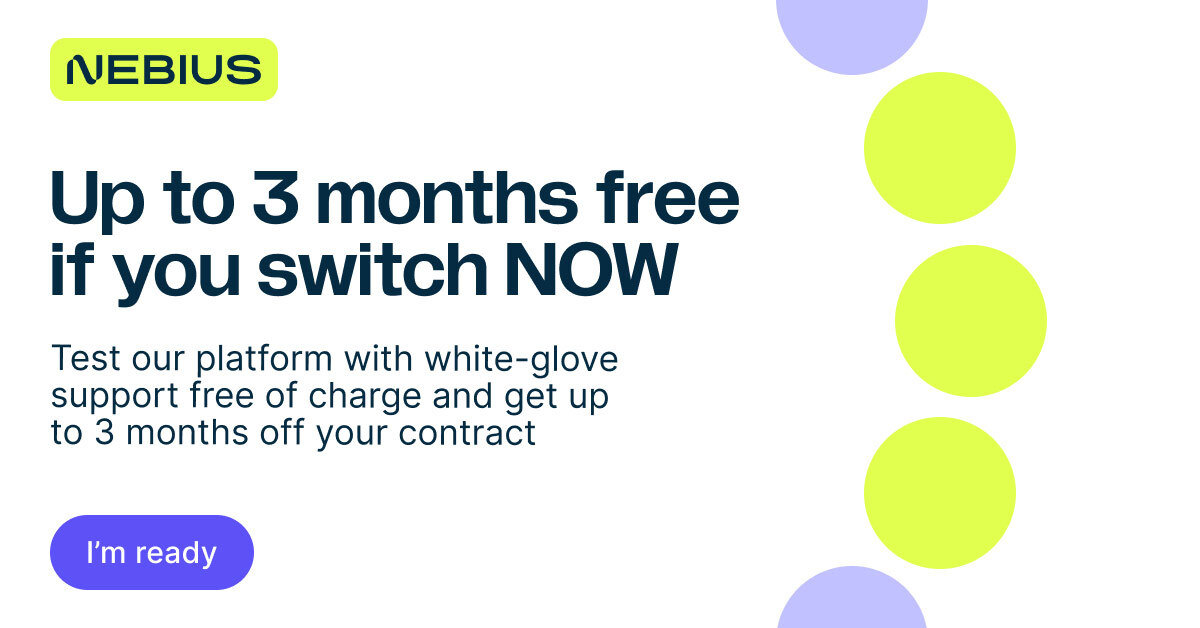Simplify campaign reviews with formatting
🚀 Meta’s reporting upgrade meets a strategic budget blueprint to boost Q4 efficiency

Hello Readers 🥰
Welcome to today's edition, bringing the latest growth stories fresh to your inbox.
If your pal sent this to you, then subscribe to be the savviest marketer in the room😉
In Partnership with Nebius
Your Next Campaign > Your Next Cloud Invoice

Your ad budget shouldn’t be paying for someone else’s GPU delays. Yet every week on AWS or Azure, surprise invoices pile up while models idle in queues, burning the runway you need for growth.
With Nebius, you’ll see this right away:
- Free migration & 3 months free, savings start immediately
- 30–50 % lower GPU spend with consistent $2/hr pricing
- Training large models up to 50 % quicker with instant scaling
Teams like Recraft and Captions already run production workloads on Nebius, citing stable clusters, quick support, and zero launch delays, proof that the platform can handle serious scale without hidden fees.
Switch to Nebius and lock in your free months before your next cloud bill hits!
Spot Performance Changes Instantly with Conditional Formatting
Running ads on Meta often means scanning endless rows of numbers inside Ads Manager, trying to spot what’s working and what’s not. That process just got a major upgrade: conditional formatting is now built directly into Ads Manager. Once reserved for custom reports, this feature allows you to quickly visualize performance shifts and act faster.
Steps to Set Up Conditional Formatting
1️⃣ Access Conditional Formatting:
Open Ads Manager, click on Columns, and select Conditional Formatting.
2️⃣ Create Your First Rule:
On the right-hand panel, click + Create Rule. Choose a key metric like Purchase ROAS, CTR, CPM, or cost per result. For example, you might set Purchase ROAS with a goal of maintaining at least 3.0.
3️⃣ Add Multiple Rules:
Click + Create Rule again to layer additional thresholds. This allows you to track varying performance levels for the same or different metrics.
4️⃣ Apply and Reload:
Save your rules, reload Ads Manager, and watch your metrics transform into color-coded signals. Instead of scanning raw numbers, your dashboard will highlight what requires attention.
Why This Matters
Q4 is a game of speed and efficiency. With conditional formatting:
- ✅ Underperforming campaigns stand out immediately
- ✅ You can reallocate budget faster
- ✅ High-performing ads become clear winners to double down on
- ✅ Your team saves time by focusing only on what matters
The Takeaway
Conditional formatting turns Ads Manager from a sea of numbers into a visual performance dashboard. By setting rules on key metrics, you create a system that flags issues automatically and helps you act with clarity. In high-stakes seasons like Q4, this small shift can make the difference between wasted spend and maximized ROI.
Designing a Budget Reallocation Blueprint
You are a pro budget-allocation architect for a [ORG_CONTEXT] optimizing for [NORTH_STAR]. First, ask these quick questions and wait for answers: total budget and horizon; current spend by area with last-90-day KPIs; must-keep commitments/constraints (contracts, headcount, compliance); seasonality and peak periods; risk appetite; data quality gaps; top 5 initiatives to fund/defund; approval timeline and decision makers. After inputs, return:
(1) a reallocation plan table (Area | Current $ | Proposed $ | Rationale | KPI | Owner | Review Date)
(2) a 30-day test budget with guardrails and stop/slow criteria
(3) base/upside/downside scenarios with expected impact on [NORTH_STAR] plus one quick win to ship this week.
We'd love to hear your feedback on today's issue! Simply reply to this email and share your thoughts on how we can improve our content and format.
Have a great day, and we'll be back again with more such content 😍